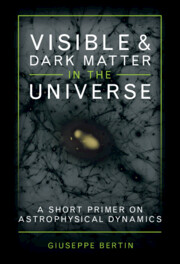Book contents
- Frontmatter
- Dedication
- Contents
- Preface
- Acknowledgements
- Part I Visible Matter
- 1 Light
- 2 Optical Astronomy
- 3 Radio Astronomy
- 4 X-Ray and Gamma Ray Astronomy
- 5 Astroparticle Physics, Gravitational Waves, and Space Physics
- Part II Dark Matter
- 6 Galaxies
- 7 The Supermassive Black Hole at the Center of the Milky Way
- 8 Two Precursors of the Problem of Dark Matter
- 9 The Discovery of Dark Halos around Spiral Galaxies
- 10 The Cosmological Context
- Index
10 - The Cosmological Context
Published online by Cambridge University Press: 08 December 2022
- Frontmatter
- Dedication
- Contents
- Preface
- Acknowledgements
- Part I Visible Matter
- 1 Light
- 2 Optical Astronomy
- 3 Radio Astronomy
- 4 X-Ray and Gamma Ray Astronomy
- 5 Astroparticle Physics, Gravitational Waves, and Space Physics
- Part II Dark Matter
- 6 Galaxies
- 7 The Supermassive Black Hole at the Center of the Milky Way
- 8 Two Precursors of the Problem of Dark Matter
- 9 The Discovery of Dark Halos around Spiral Galaxies
- 10 The Cosmological Context
- Index
Summary
The discovery of dark matter in galaxies marks a turning point in astrophysics
especially because of its conceptual relevance to cosmology. After a brief introduction to the dynamics of collisionless stellar systems, a short account is given of the study of dark halos in ellipticals. Then it is shown that the dark matter contained in galaxies does not change the value of the key cosmological parameters significantly. The text continues with an outline of some modern simulations of structure formation, a vast and fast-evolving field of research that ultimately focuses on the issues that define the formation and the evolution of galaxies and on the structure of dark halos. Then, at the forefront of current research, for the nearby and present universe the potential of modern telescopes such as Gaia is briefly recalled; for the distant and early universe, a short summary is given of the role of gravitational lensing as diagnostics of dark matter for galaxies, clusters of galaxies, and structure formation. Finally, the main steps are outlined of an attempt (MOND), started in the early 1980s and still continuing with some success, which explores the possibility that the law of gravitation requires a modification on the scales of galaxies and beyond and that dark matter does not exist.
Keywords
- Type
- Chapter
- Information
- Visible and Dark Matter in the UniverseA Short Primer on Astrophysical Dynamics, pp. 151 - 172Publisher: Cambridge University PressPrint publication year: 2022

